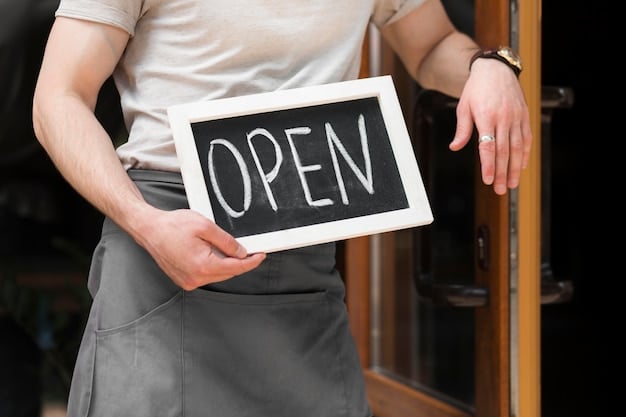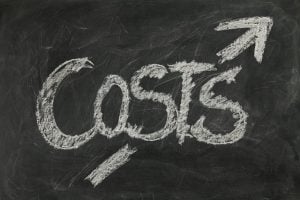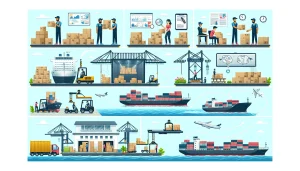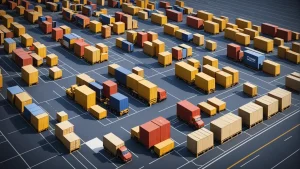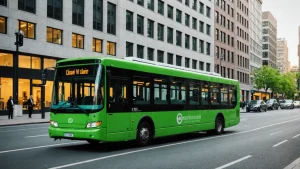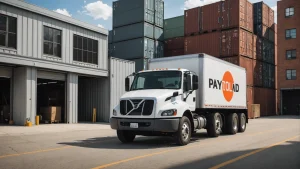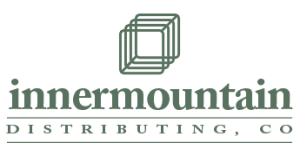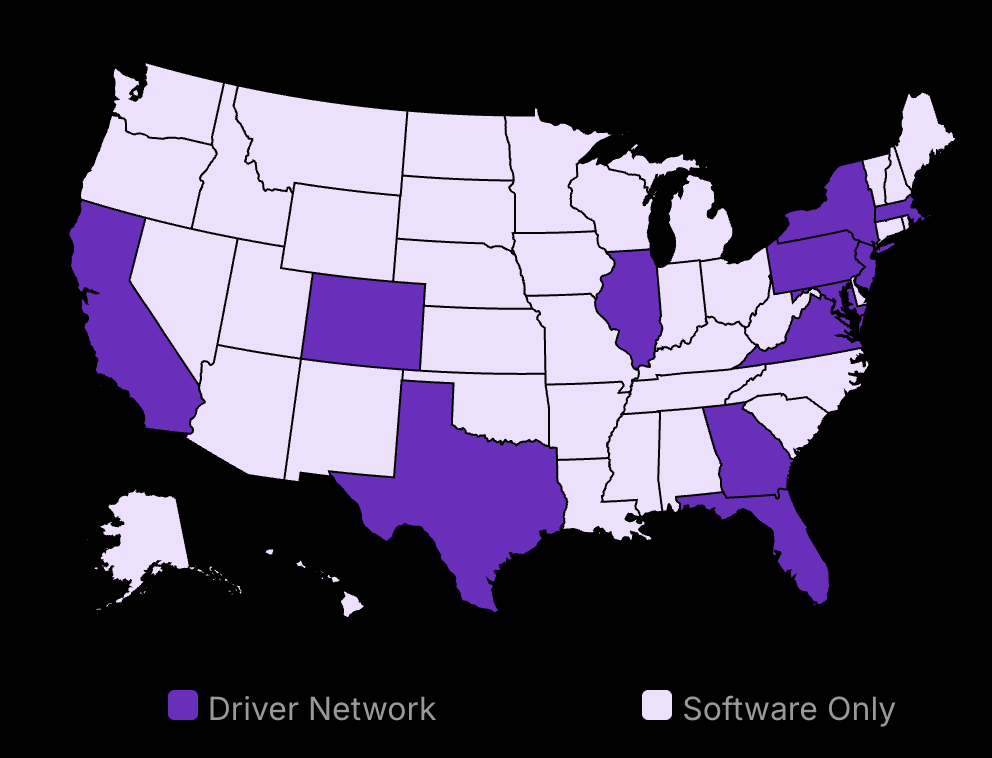Starting a restaurant business and opening your own restaurant isn’t just expensive—it’s often a financial mystery that can derail dreams. The real restaurant startup costs shock most first-time restaurant owners, who typically underestimate their budget for their new restaurant.
Ask experienced owners “how much does it cost?” and nearly every single one will say: “It cost more than I planned.” One owner in Chicago budgeted a certain amount for his restaurant space. His final bill for initial setup costs was significantly higher—and that was before serving a single customer or finalizing his menu items.
The harsh truth, often highlighted in restaurant owners reports, is that many restaurants fail within the first year, with a lack of careful financial planning and miscalculated major expenses being primary killers. This isn’t meant to discourage you—it’s meant to prepare you for the realities of opening a restaurant.
Why does this happen? Potential owners focus on visible initial costs: kitchen equipment, décor, securing the commercial space. They miss hidden operating costs that silently drain accounts: obtaining a food service license or the general business license taking months longer than expected (sometimes involving the local health department), unexpected construction delays impacting the monthly rent payments before opening, training front of house staff, managing food costs from day one, and having enough cash flow to survive until profitability. These restaurant costs add up quickly.
The true cost of opening a restaurant isn’t just about the down payment or securing financial assistance. It’s about time, resilience, navigating food safety regulations, and making smart choices when facing unexpected challenges like rising labor costs or utility costs. The restaurant requires meticulous attention to detail.
What if you had accurate estimated costs? What if you could anticipate every expense, from potentially a few hundred dollars for a food handler’s permit to major investments in service equipment or restaurant technology, before spending a dollar?
That’s what this guide provides: a complete financial roadmap based on real data, helping you build a solid business plan. Not to scare you away from your restaurant concept, but to ensure you enter the food service industry with open eyes and a realistic plan.

Boost customer satisfaction with just a few clicks
Most-Loved Features:
- On-demand drivers
- Real-time GPS tracking
- Delivery confirmation photos
- Over 50% of customers report a smoother delivery experience
Understanding Restaurant Startup Costs 2025
The cost to open a restaurant in 2025 varies greatly based on type, location, and size.
A small restaurant has lower costs, but there are still many expenses to consider.
This section explores key cost components and offers real-world insights from new restaurant ventures.
Average Cost Overview: How Much Does It Cost?
Understanding restaurant startup costs in 2025 involves looking at various elements, all influenced by type, location, and size. The average restaurant startup cost varies significantly depending on whether you lease or own the space, based on estimates by Sage Accounting. Smaller restaurants generally require less financial outlay but can still command significant funds, according to Lightspeed.
Startup Cost Range: The average startup cost for a new restaurant ranges from $95,000 to over $2 million, depending on the concept and location.
Costs also vary by location. Urban settings often have higher expenses than rural ones. Building costs can fluctuate widely. This can depend on location, restaurant type, and whether the project uses new or existing space. Knowing the cost differences can help budding restaurateurs set realistic budgets and prepare for costs that match their chosen location and style.
For a deeper understanding, consider reading “Restaurant Success by the Numbers” by Roger Fields, which demystifies restaurant economics. Podcasts like “Restaurant Unstoppable” provide practical insights from industry veterans.
Key Financial Components
Lease or Purchase of Commercial Space: Considering the Down Payment
Choosing between leasing or purchasing a premises is a foundational decision. Leasing creates lower upfront costs but increases long-term financial commitments. Leasing costs vary per seat, Sage Accounting notes. Owning, although initially more costly, offers eventual financial benefits, with costs also varying per seat. A significant factor in purchasing is the initial down payment.
Typical Rent Costs: Rent or lease payments typically consume about 6% to 10% of a restaurant’s total revenue.
Analysts suggest considering location trends. Urban areas might have higher lease rates but offer more foot traffic, which boosts sales potential. Conversely, suburban locations often boast larger spaces at lower cost, but with potentially lower customer volume.
For further insight, “Setting the Table” by Danny Meyer explores the value of location and its impact on success, and the “Restaurant Rockstars” podcast delves into strategic location selection for profitability.
Building and Renovation Expenses: Managing Construction Costs
Construction costs can fluctuate, often influenced by city regulations and property conditions. Building new offers customization but at a premium, whereas renovating saves money but may reveal hidden repairs. Startup costs can vary greatly, highlighting the variances tied to construction choices, according to WebstaurantStore.
It’s crucial to incorporate a contingency budget. Unforeseen expenses, especially in older properties, often emerge during renovations. Consulting with experienced contractors helps in getting precise estimates and can save both time and money.
For builders and renovators, “The Elements of Building” by Mark Q. Kerson is a useful resource. Online courses from platforms like Coursera can aid in understanding construction management essentials.
Essential Kitchen Equipment and Furnishings
Equipment and furnishings present hefty expenses, often overlooked initially. Essential kitchen equipment, refrigeration, and furniture configurations vary by restaurant type. Consider new versus secondhand options to balance quality with cost. The budget for equipment can vary significantly depending on the scale of the operation.
It’s vital to plan for the maintenance of these assets, as the cost extends beyond just the initial purchase. Lemonis, a hospitality expert, advises focusing on high-quality, durable equipment that withstands frequent use.
For further reading, consider “Restaurant Equipment and Supplies” by The DURG Team, and listen to “The Profitable Table” podcast, which often features discussions on cost-efficient equipment selection.
Additional Cost Factors
Licenses and Permits
Securing proper licenses and permits is essential. This includes food and liquor licenses, health permits, and zoning clearances. The process can be lengthy and bureaucratic, demanding close attention to detail to avoid legal issues. Remember, regions with stringent laws like New York or California often require higher permit fees, adding another layer to startup costs.
Seeking advice from consultants who specialize in restaurant licensing can streamline the process. The National Restaurant Association is a helpful resource for guidance on state-specific requirements.
Initial Inventory Costs
Initial stock levels, particularly perishable items, must be calculated precisely. Balancing quality and cost involves understanding supplier dynamics. Securing credit arrangements with suppliers may offer flexibility in the early months. However, overestimating needs will lead to waste, while underestimating could drive patrons away.
Accessing bulk purchasing agreements or cooperative buying groups can result in lower costs. It’s wise to continually evaluate suppliers for both price and reliability to maximize profit margins.
Books like “Restaurant Inventory Management & Control” by Gary Meszaros offer strategies for efficient stock control, while online resources from the Small Business Administration provide insights into effective inventory management.
Technology and POS Systems
Recent advancements in technology have made point-of-sale (POS) systems vital for operations. A modern POS not only facilitates smooth transactions but also offers analytics for decision-making. Initial investments range widely but often prove cost-saving long-term. Experts agree that integrating tech can enhance customer experiences and operational efficiency.
Consider systems that support mobile ordering, online payment, and loyalty programs. While initial acquisition costs might seem high, they often lower human error and improve service speed, bolstering overall revenue.
To explore tech solutions, “The Restaurant Manager’s Handbook” provides a comprehensive tech guide, while the podcast “Restaurant Technology Guys” dives into innovations shaping modern eateries.
Understanding these cost components sets the groundwork for developing a robust business plan. By scrutinizing these elements, aspiring restaurateurs equip themselves for the dynamic and challenging journey ahead.
Detailed Restaurant Expenses Analysis
Operational costs include fixed and variable expenses.
Marketing costs cover both traditional and digital strategies.
Maintenance costs involve planning for regular upkeep and unexpected problems.
Operational Cost Breakdown for Food Service
Operational costs in restaurants are divided into fixed and variable categories specific to the food service industry. Fixed costs remain consistent each month, like rent and insurance. Variable costs, however, fluctuate with the restaurant’s activity level, such as food and beverage purchases. Industry benchmarks exist for rent and food costs as percentages of sales or revenue. Failure to manage these costs can lead to financial issues. A comprehensive understanding of fixed versus variable expenses can assist in making informed decisions about operations, ensuring financial health and adaptability to demand changes.
Average Operating Costs: The average restaurant operating costs account for approximately 30% of total revenue, covering expenses like rent, utilities, and maintenance.
Monthly Operational Expenses Overview, Including Monthly Rent
Monthly operational expenses form the backbone of restaurant budgeting. Monthly rent, utilities, and other regular bills must be predicted for steady cash flow. Utility costs have been trending upwards, prompting restaurants to seek energy-efficient solutions, according to the National Restaurant Association. Labor also plays a significant role, with staff wages making up a large portion of sales. Benefits add to this cost. Comprehensive tracking is crucial, as these ongoing expenses require regular attention and adjustment, especially in the face of rising costs.
Typical Monthly Expenses: Monthly expenses for restaurants typically range from $30,000 to $50,000, representing 25% to 35% of overall revenue.
Typical Utility Costs: Utilities expenses, including electricity, gas, water, and internet, can range from 3% to 5% of a restaurant’s revenue.
Staff Wages, Benefits, and Labor Costs
Staff wages and benefits represent one of the largest costs in restaurant operations, collectively known as labor costs. Employee wages should align with industry standards, taking local laws into account. The annual cost for a full-time employee can vary depending on location and specialization. Benefits, offering health insurance and competitive wages, can boost employee satisfaction and reduce turnover. Investing in staff, through competitive compensation and benefits, though costly, often leads to higher retention rates and improved customer service. Balancing these costs with operational needs can significantly enhance a restaurant’s reputation and overall success.
Labor Cost Percentage: Labor costs account for approximately 30% of total expenses in the restaurant industry.
Marketing Costs and Promotion
Marketing costs in restaurants aim to attract and retain customers through both traditional and digital channels. Traditional marketing includes costs for print media, signage, and events, often representing a percentage of expected revenue. Digital marketing, leveraging social media platforms and email campaigns, offers cost-effective solutions for targeted outreach. Initial launch promotions often make a significant impact, requiring a well-timed budget allocation. Continuous efforts sustain interest and engagement. Understanding these costs and their potential returns helps in developing a budget that effectively supports the restaurant’s growth and visibility.
Typical Marketing Costs: Marketing and advertising costs often constitute around 4% to 6% of a restaurant’s revenue.
Launch Promotions and Ongoing Marketing Strategies
Launch promotions can drive significant customer traffic and brand awareness, but they require a strategic financial plan. These may include introductory discounts, special events, or media campaigns. Following the launch, ongoing strategies such as loyalty programs or seasonal menus help maintain interest. Allocating a portion of projected sales toward marketing ensures a balanced approach between initial bursts of activity and steady, long-term brand growth. Consistency is key. Planning out these costs enables the restaurant to capture the desired audience effectively, leading to sustained success.
Cost of Building a Brand Presence
Brand development is essential for differentiating a restaurant in a crowded market. Costs involve logo design, website creation, and establishing a unique ambiance. Without setting aside funds for these elements, creating a recognizable and trusted brand is challenging. According to Forbes, a strong brand can increase a restaurant’s value. Investing in a cohesive brand presence fosters loyalty and sets a strong foundation for marketing efforts. A certain initial investment is a reasonable starting point, ensuring quality and consistency that resonate with customers.
Maintenance and Unexpected Costs
Maintenance and unexpected costs can strain restaurant budgets if not adequately prepared. Routine maintenance—such as equipment servicing, cleaning, and facility upkeep—helps preserve asset longevity and minimize disruptions. Setting up a reserve fund can address unexpected repairs and emergencies, like plumbing or HVAC failures. Insurance further mitigates risk, protecting against liabilities and unforeseen events. Understanding these potential costs encourages proactive budgeting, reducing stress and safeguarding both operations and reputation against unexpected financial pressures.
Typical Maintenance Costs: Maintenance and repairs can take up about 1% to 3% of a restaurant’s total revenue, including regular upkeep and unexpected repairs.
Budgeting for Unexpected Repairs and Emergencies
Unexpected repairs can threaten a restaurant’s financial stability, demanding prompt attention and adaptable budgeting. Establishing an emergency fund helps address these situations without damaging daily operations. Allocating a portion of monthly revenue into a reserve fund ensures readiness for sudden expenses. Regular facility inspections and maintenance schedules play a crucial preventative role, in identifying potential issues early. A well-planned approach to unexpected emergencies reinforces the restaurant’s ability to continue serving customers, maintaining a steady flow, and upholding quality service during challenging circumstances.
Insurance and Legal Fees
Insurance coverage provides essential protection for restaurants, helping manage unforeseen legal and financial crises. General liability insurance, liquor liability, and workers’ compensation are key components, of ensuring safety and compliance with legal requirements. Annual insurance premiums can vary based on restaurant size and location. Legal fees, which can vary hourly, cover consultations and any necessary legal representation. Maintaining proper insurance and legal frameworks minimizes risks, offering peace of mind and allowing restaurateurs to focus on daily operations and strategic growth, with fewer unexpected disruptions along the way.
Typical Insurance Costs: Insurance expenses for restaurants typically account for about 2% to 3% of their revenue.
Smart Restaurant Budgeting Strategies
Effective budgeting is critical for restaurant success.
Cost-saving strategies help streamline operations.
Prioritizing essential expenses prevents overspending.
Budget Planning Essentials: The Role of the Business Plan
Creating a restaurant budget requires careful planning and foresight. A detailed business plan serves as a guiding document that outlines expected revenues and expenditures. This plan helps prioritize spending, prevent unplanned expenses, and facilitates discussions with potential investors or lenders. Reports indicate that a significant portion of restaurant operators experienced unprofitability recently. Clearly defining where money should be spent, such as on quality kitchen equipment or marketing, is crucial for managing limited funds effectively.
To stretch a limited budget, focus on establishing priorities. Essential expenditures such as maintaining food quality and ensuring smooth operations must be at the forefront. Yet, it’s also vital to scrutinize other areas where costs can be minimized without sacrificing quality or service. Even small mistakes can lead to overspending, showing the need for meticulous financial management. For more on budgeting principles, you might explore “Restaurant Accounting & Finance for Non-Accountants” by David Pavesic, or listen to the “Restaurant Unstoppable” podcast featuring insights from successful operators.
A common question among entrepreneurs—Is a small amount enough to open a restaurant?—often arises. While this amount may help you test out a minimal concept, especially in a food truck or pop-up setup, it falls short for a comprehensive dining establishment. Realistically, startup costs for a small restaurant typically require substantial investment due to necessary investments in space, equipment, and initial inventory. Understanding this early on can help set achievable financial goals. Check Michelin’s “The Restaurateur’s Guide” for a deeper understanding of financial practices in the industry.
Finding Cost-Saving Opportunities
Cost-saving strategies are essential for maximizing restaurant profitability. Negotiating with suppliers can significantly reduce food costs, a challenge cited by many operators. Building strong relationships and buying in bulk can lead to discounts and better payment terms. Additionally, consider the often-overlooked potential for savings through strategic marketing. Cost-effective marketing ideas include leveraging social media platforms, collaborating with influencers, and implementing loyalty programs. These techniques can increase visibility without breaking the bank.
Technology presents another avenue for cost reduction. Automated inventory systems and demand forecasting tools can minimize food waste and streamline ordering processes, addressing the issue of food waste. Many tools offer functionality to track sales patterns, automate ordering, and manage employee schedules and payroll efficiently. “Growing Your Restaurant Business” by Steve Collins offers insights into practical approaches for enhancing efficiency through technology.
To learn more about advanced inventory management, “Inventory Management Explained” by David J. Piasecki can be an excellent resource. The podcast “On the Menu” regularly discusses technology trends in the food service sector, offering practical examples and advice.
Understanding and implementing smart budgeting and cost-saving strategies can equip restaurant owners with the tools to manage finances effectively, ensuring long-term profitability in a competitive market.
Crafting an Opening a Restaurant Financial Plan
Financial forecasts help predict costs.
Regular reviews keep you on track.
Cash flow management is key.
Creating a Comprehensive Financial Plan
An effective financial plan is the backbone of any restaurant startup. It provides the roadmap that guides all financial decision-making. One crucial aspect is financial forecasting. This involves estimating future revenue and expenses based on market trends, historical data, and industry benchmarks. Excel can help get started with financial modeling. Once you have a basic understanding, dive deeper into more advanced tools like QuickBooks or Restaurateur Financial Guides.
Next, setting financial milestones and goals can drive progress. These goals need to be realistic but challenging. For example, your first goal might be breaking even within the first year. To achieve these, performance must be monitored against these goals regularly. Mismanagement of finances can result in devastating losses, so it’s imperative to remain vigilant and adjust your tactics as the situation demands. Harvard Business School’s Guide to Financial Planning can be a great resource to explore further.
Regular financial reviews are essential. These involve analyzing your financial data to assess performance and making necessary adjustments. It might be beneficial to have frequent quarterly reviews and a more extensive annual review. Reading up on “Accounting and Financial Analysis in the Hospitality Industry” by Jonathon A. Hales might provide additional insights into structuring these reviews thoughtfully.
Managing Cash Flow
Cash flow management keeps the doors open. Maintaining a positive cash flow ensures that costs can be met even when revenue dips. Techniques to maintain cash flow include monitoring cash flow statements frequently and conserving cash wherever possible. Invest in finance management software tailored for restaurants like Avero or Toast to streamline this process.
Understanding revenue cycles and seasonality is just as important. Restaurants often see varying levels of customer activity throughout the year. Data from past years or industry reports such as National Restaurant Association’s data can provide insight. If possible, create strategies for leaner months, focusing on promotions or adjusting staffing levels.
Working capital management is another key area. It involves balancing current assets and liabilities. Too little working capital can mean your business can’t respond well to unexpected expenses or opportunities. Too much might mean money is idling with low returns. Focus should be given on the turnover of inventory and timely collections of receivables. Books like “Principles of Managerial Finance” by Lawrence J. Gitman can give deeper insights into the concepts of working capital.
What is the Most Expensive Part of Running a Restaurant? Understanding Food Costs
A common question is about the largest cost involved in running a restaurant. Consistently, the highest costs come from labor and food. Labor costs can account for a significant portion of revenue. This includes wages, benefits, and payroll taxes. Food costs also represent a large percentage and include the cost of raw ingredients and beverages. To optimize these expenses, consider staff scheduling based on demand and explore bulk buying agreements, which may lead to discounts.
Average Food Costs: Food costs are one of the largest operating expenses for multi-unit restaurants, averaging 35% of revenue.
Use technology that aids in developing efficient staff rotas. Systems like 7shifts are built to help balance labor costs with customer needs. Readings like “Restaurant Success by the Numbers” by Roger Fields can provide further tips on managing these significant expenses effectively.
Supplementary Information
Break down key terms for better clarity.
Understand location impact on costs.
Balance savings in equipment and staffing.
Understanding Key Restaurant Terminology
Getting a handle on restaurant lingo is crucial. Terms like “cost of goods sold” (COGS), “prime cost,” and “gross profit” pop up often. COGS includes the cost of food and drink; prime cost combines COGS with labor costs, which can represent a large portion of sales. Knowing these terms helps you communicate and budget better.
For more on this, lean on books like Restaurant Success by the Numbers by Roger Fields.
Importance of Location in Cost
Your location sets the stage for your restaurant. High-rent spots, like downtown, attract crowds but cost more. Cheaper areas save money but might have less foot traffic. Each zone has its own regulations and demographics.
Case studies often show restaurants in urban areas paying significantly more for rent. Pick what’s best for your brand. A pizzeria might do well in a family area, while a bar might thrive downtown.
Evaluating Equipment Needs
Different restaurant styles need different gear. Casual spots might need ovens and fryers; fine dining might demand specialized tools. Weigh the cost of new versus used items. New gear gives warranties; used items lower upfront costs.
Restaurants allocate a portion of their startup budget on equipment. A friend of mine bought used freezers and saved a bundle but had repair costs later.
Impact of Staff on Budget
Employees make up a big slice of your expenses. Staff roles range from chefs to cashiers. Pay varies by role and experience, with chefs and managers at the higher end. Training costs add up, especially with high turnover. Staff turnover can be a significant issue in the industry.
Keeping staff content saves money. Competitive wages, growth chances, and a good environment cut turnover.
Conclusion
Opening a restaurant in 2025 restaurant requires careful financial planning and substantial financial investment. The true restaurant costs extend well beyond the initial cost—covering major costs from location selection and the monthly rent per square foot for the dining room and kitchen, to purchasing kitchen equipment (like cold food tables) and service equipment. Managing ongoing operating expenses such as restaurant utilities, labor costs (including potential employee benefits), inventory management, staff training, and marketing is crucial. Success hinges on understanding both the obvious major expenses and the hidden ones, like the fees for a fire department permit or potentially a liquor license if serving alcoholic beverages, that can catch new owners off guard.
As you refine your solid business plan, remember every restaurant business path differs. Estimated costs vary based on your restaurant concept—whether a small restaurant focusing on takeout or large-scale casual dining or one of the modern restaurants—location, and business model. Smart owners leverage restaurant technology for efficiency, perhaps in inventory management or reaching potential customers, knowing when to invest heavily and when to be frugal with food costs.
Your plan for operating expenses should be a living document. Regular reviews of menu items and their associated food costs, for instance, help adapt to market changes and keep your business on track through the inevitable ups and downs of the industry.
Whether planning a small restaurant café or a full-service establishment, realistic budgeting is your strongest ally. This includes planning for everything from employee benefits and restaurant utilities to securing necessary permits like the food service license, business license, fire department permit, and approvals from the local health department. Approaching your venture with clear financial awareness, anticipating the needs of potential customers, and mastering food safety, helps you join the ranks of successful restaurant owners turning culinary dreams into sustainable businesses.

